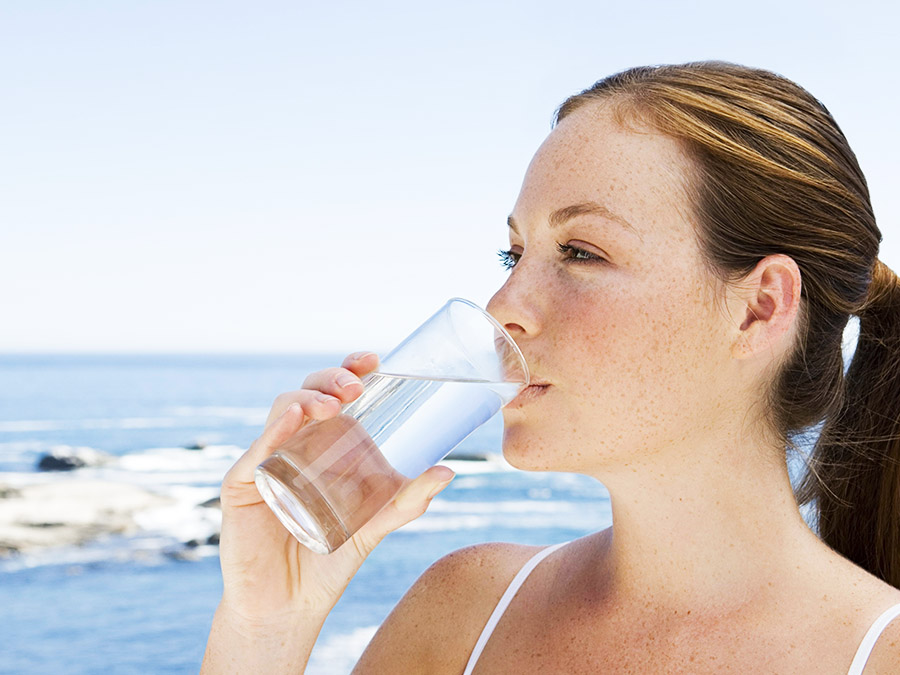How Safe Is the Water We Drink?

The definition of pure water is bacteriologically safe water, the tap water having a pH between 6.5 and 8.5. This allows a great deal of leeway in what passes as acceptable water. How Safe Is the Water We Drink?
Over 350 different man-made chemicals have been detected in tap water.
Alum, chlorine and many other inorganic compounds are put into the water supply to purify it. There are many places where lead and aluminum are a problem in the water. The leakage of animal slurry into rivers causes water pollution particularly nitrates. Nitrates destroy vitamins A and E; cause mineral imbalance and hormone disturbance and they are carcinogenic.
Other contaminants include pesticides, herbicides and parasites such as cryptosporidium. Radioactive iodine, natural and synthetic steroids such as oral contraceptives, anti-cancer drugs, antibiotics and other hospital wastes have all been detected in certain water supplies. Most jug type filters remove some of the chemicals, but many remain. Certain bottled waters are no better than tap water and have high levels of nitrates.
Chlorine has long been added to public water supplies to kill bacteria. However, the levels of chlorine can be quite high and some by-products of chlorine are known carcinogens. Once inside the body chlorine destroys the healthy bacteria in our intestines which are vital for immune function. Chlorine in the form of steam such as in a steam room or shower can have a vasoconstricting effect on the airways of some asthma sufferers. Chlorine dries out the skin and hair and can create chloroform when it reacts with peat and other material found in water. There is a link between chloroform ingestion and cancers of the bladder, colon and rectum. Note, if you cant smell the chlorine in the water, you can expect that another chemical has been added to suppress it.
Aluminum sulfate is added to make the water look crystal clear. With all those inorganic minerals and chemicals dissolved, the water should look turbid. Aluminum sulfate takes ions out of suspension, creating clear water. Aluminum has been linked to Alzheimer’s disease.
The best way of hydrating the body is through the use of fresh, organic fruit and vegetable juices. The water content, full of enzymes, is very bio-available to the body and is alive. This is called structured water and has a different crystalline shape than water which has no life force. Sunshine and magnets can both structure water. Tap water or bottled water is dead water and has no vital energy. The body will not assimilate the tap or mineral water as efficiently as the juices and so we will be thirsty again very soon after drinking the mineral or tap water.
The amount of water a body needs depends on temperature, climate, ones activities and health. We need to drink at least 8 glasses (8ozs) of water daily. We should not rely on our thirst barometer to tell us when it is time to drink as it is not a very sensitive instrument. By the time we are feeling thirsty, our cells are already dehydrated. We should take a leaf out of the book of good mountaineers who recognize the continual insidious loss of fluids due to high altitude-drink before you are thirsty.
Be aware that protein breakdown requires more water and if you eat a lot of protein, your water requirements will be greater. Remember not to drink too much water or fluids with main meals. This dilutes the stomach acid and so it is better to drink water between meals.
Want to learn more? Enroll on the Regenerate with Cell Salts Course today!
Articles on this website are based upon the opinions of their respective author(s). None of the information on this website is intended as medical advice nor replaces the advice of a qualified health care professional.
